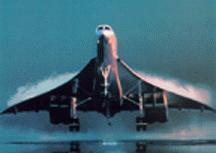Morien Morgan facts for kids
Sir Morien Bedford Morgan was a famous Welsh aeronautical engineer. He is sometimes called "the Father of Concorde" because of his important work on the Concorde airplane. He spent most of his career at the Royal Aircraft Establishment (RAE), which is a place where aircraft are researched and developed. Later, he worked for the government in Whitehall as the Controller of Aircraft. Towards the end of his life, he was the head of Downing College, Cambridge, a college at Cambridge University.
Contents
Early Life and Education
Morien Morgan was born in Bridgend, Wales, on December 20, 1912. His father, John Bedford Morgan, was a draper (someone who sells cloth), and his mother, Edith Mary Thomas, was a teacher.
He went to several local schools before studying at Magdalen College School, Oxford. In 1931, he went to St Catharine's College, Cambridge University. While at Cambridge, he became very interested in airplanes. He even won a special prize for aeronautics (the science of flight) in 1934.
Career in Aviation
After a short time working at Vickers Aviation, Morgan joined the Aerodynamics Department at the Royal Aircraft Establishment (RAE) in 1935. The RAE was a key place for aircraft research in the UK. He worked in Farnborough, where he met Sylvia Axford. They got married on April 19, 1941, and had three daughters: Carol, Deryn, and Gwyneth.
In 1959, he left the RAE to become a science advisor for the Air Ministry. From 1960 to 1969, he held many important jobs within the government's aviation department. He returned to the RAE as its Director in 1969 and stayed in that role until 1972. In 1967, he became the first Welsh person to be the President of the Royal Aeronautical Society, a leading group for aerospace professionals.
Leading Downing College
In 1972, Morien Morgan became the Master of Downing College, Cambridge. This meant he was the head of the college. He held this position until he passed away. People at Downing College remembered him for his "enthusiasm and good humour." They also noted his Welsh charm, his ability to speak well, and his great love for music. He got along well with everyone.
Morien Morgan received several important honors for his work. He was made a Companion of the Order of the Bath (CB) in 1958. He was also knighted in 1969, which meant he became "Sir Morien Morgan." In 1972, he became a Fellow of the Royal Society, a very respected group of scientists.
Researching Supersonic Flight

One of Morien Morgan's most famous contributions was his work on supersonic passenger airplanes. These are planes that can fly faster than the speed of sound. In 1948, he started researching how to build such an aircraft.
In November 1956, he became the chairman of a new group called the Supersonic Transport Aircraft Committee, or STAC. This committee provided money for research into supersonic flight at different aviation companies in the UK throughout the 1950s.
By the late 1950s, STAC began choosing specific designs to develop. After many UK aviation companies merged in 1960, they chose the Bristol 223 design. This design would become the basis for the famous Concorde airplane.
Morien Morgan worked tirelessly on the Concorde project. He helped solve many technical and political problems to make sure the project succeeded. From 1963 to 1966, he co-chaired the Concorde oversight committee with his French colleague, Robert Vergnaud. This was when the serious work on the plane began.
It was amazing how quickly the Concorde went from design to being built, especially since it was the first plane of its kind. (Testing and getting approval took much longer, though!) Morgan believed that combining French passion with British calmness led to impressive results in aircraft design and research. He thought this teamwork was very valuable.


